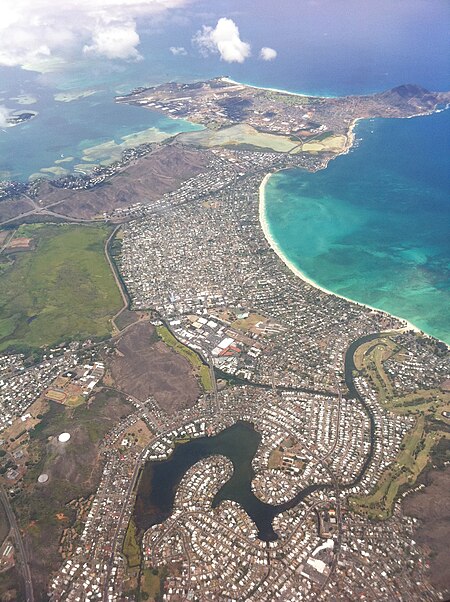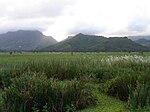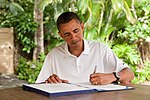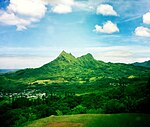Kailua, Hawaii

Kailua (Hawaiian pronunciation: [kɐjˈluwə]) is a census-designated place (CDP) in Honolulu County, Hawaii, United States. It lies in the Koʻolaupoko District of the island of Oʻahu on the windward coast at Kailua Bay. It is in the judicial district and the ahupua'a named Ko'olaupoko. It is 12 miles (19 km) northeast of Honolulu – over Nu‘uanu Pali. In the Hawaiian language Kailua means "two seas" or "two currents", a contraction of the words kai (meaning "sea" or "sea water") and ʻelua (meaning "two"); it is so named because of the two former fishponds in the district (Kawainui and Kaʻelepulu) or the two currents that run through Kailua Bay.Kailua is primarily a residential community, with a centralized commercial district along Kailua Road. The population was 50,000 in 1992. In 2017 census, the population had dropped to 38,000. The population was 40,514 at the 2020 census. Places of note in Kailua include Kailua Beach Park, Kaʻōhao or Lanikai Beach, Kawainui Marsh, Maunawili Falls, and Marine Corps Base Hawaii. It was home to Barack Obama’s winter White House.
Excerpt from the Wikipedia article Kailua, Hawaii (License: CC BY-SA 3.0, Authors, Images).Kailua, Hawaii
North Kainalu Drive, Kailua
Geographical coordinates (GPS) Address Nearby Places Show on map
Geographical coordinates (GPS)
| Latitude | Longitude |
|---|---|
| N 21.3975 ° | E -157.73944444444 ° |
Address
North Kainalu Drive 20
96734 Kailua
Hawaii, United States
Open on Google Maps






